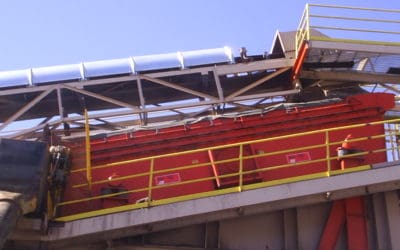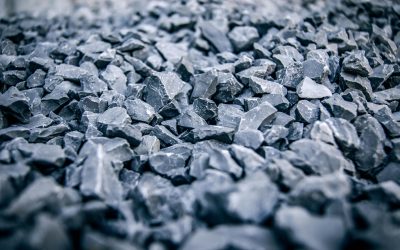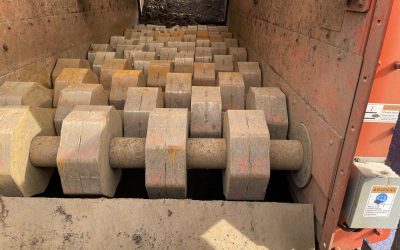As urbanization and consumption continue to grow, municipal solid waste (MSW) management has emerged as a critical challenge. The sheer diversity and volume of waste generated have placed conventional waste management systems under unprecedented stress. Effective sorting and processing have become imperative for environmental sustainability, public health, and resource conservation.
This article will explore how vibrating screens have emerged as key instruments in addressing these pressing challenges.
The Complexity of Diverse MSW Streams
MSW can include a wide variety of materials, each with its own unique characteristics and challenges. Some of the key components include:
- Organic waste: The decomposition of food scraps, yard waste, and other biodegradable materials can contribute to environmental issues, such as methane emissions in landfills.
- Plastics: Plastic packaging materials, containers, and single-use items are found everywhere in MSW. Their non-biodegradable nature poses environmental concerns and challenges for recycling. Learn how plastic bag contamination hurts the recycling stream.
- Paper and cardboard: Paper products, cardboard packaging, and various forms of printed material contribute to the paper fraction of MSW, and efficient paper recycling is essential for resource conservation.
- Metals: Ferrous and non-ferrous metals (derived from discarded appliances, packaging, and other goods) form a valuable but challenging component of MSW, due to their recyclability, weight, and diversity. Learn how to navigate the challenges of scrap metal recycling.
- Glass: While glass containers and products are recyclable, their heavy nature can complicate the handling process.
- Textiles: The diverse nature of clothing, fabrics, and other textiles (ranging from natural fibers to synthetic materials) poses sorting challenges.
- E-waste: Electronic waste, including outdated electronics and appliances, presents unique challenges, due to the presence of hazardous materials and the rapid evolution of technology. Learn more about e-waste problems and solutions.
According to Nature’s 2013 article Environment: Waste production must peak this century, as a nation experiences economic growth and increased prosperity, the makeup of its waste undergoes a transformation, including more packaging, imported goods, electronic waste, and discarded toys and appliances.
Challenges Associated with Traditional Sorting Methods
Manual Sorting
Manually sorting a diverse waste stream is a slow and very laborious process that requires a significant amount of workers, who are then exposed to potential health and safety risks.
Plus, human error is inevitable. This may lead to misclassifications, improper waste disposal, reduced recycling rates, and increased contamination.
Traditional Machines
Some traditional sorting methods, such as rotary drums and trommels, may require significant space for installation, limiting their usability in urban areas where space constraints make it difficult to establish large-scale waste sorting and recycling facilities. See how trommels compare to the Freedom Disc Screen.
Additionally, basic mechanical sorting methods may rely on limited criteria (such as size, weight, or magnetic properties), making them less effective in handling complex sorting requirements.
As waste streams continue to evolve, the adoption of automated solutions, including advanced sorting technologies like vibrating screens, becomes essential for overcoming the limitations associated with manual sorting and traditional methods.
The Crucial Role of Vibrating Screens
Vibratory, or simply vibrating, screens have become a necessity of modern waste management. Their importance lies in the ability to efficiently separate diverse materials, based on both size and weight, ensuring a more streamlined and effective waste sorting process. As waste travels along the vibrating surface, lighter materials are lifted, and heavier materials settle, facilitating a precise separation and minimizing the risk of cross-contamination.
These screens are designed to handle an extensive array of materials found in modern waste streams, ranging from bulky items to smaller particles. Whether it’s plastics, paper, metals, or other components, vibrating screens adapt to the diverse nature of waste materials.
Vibrating screens are highly customizable, allowing for adjustments to accommodate specific sorting requirements. Screen inclination, amplitude, and mesh size can be tailored to the characteristics of the waste stream, ensuring optimal performance.
Challenges for Urban Areas
It’s difficult for traditional sorting methods to keep up with the increasing volumes of waste generated in urban areas. Plus, residents may not practice proper source segregation. This can lead to processing bottlenecks, slower overall throughput, and reduced capacity.
Meanwhile, the Bivitec vibrating screen can ensure a continuous and streamlined sorting process. It has the ability to swiftly and accurately separate materials of different sizes and types, and its design minimizes blockages and maintenance requirements, reducing downtime associated with equipment upkeep.
Contact AEI for a quote on a Bivitec screen that can efficiently handle diverse streams and help improve MSW management in urban areas.


